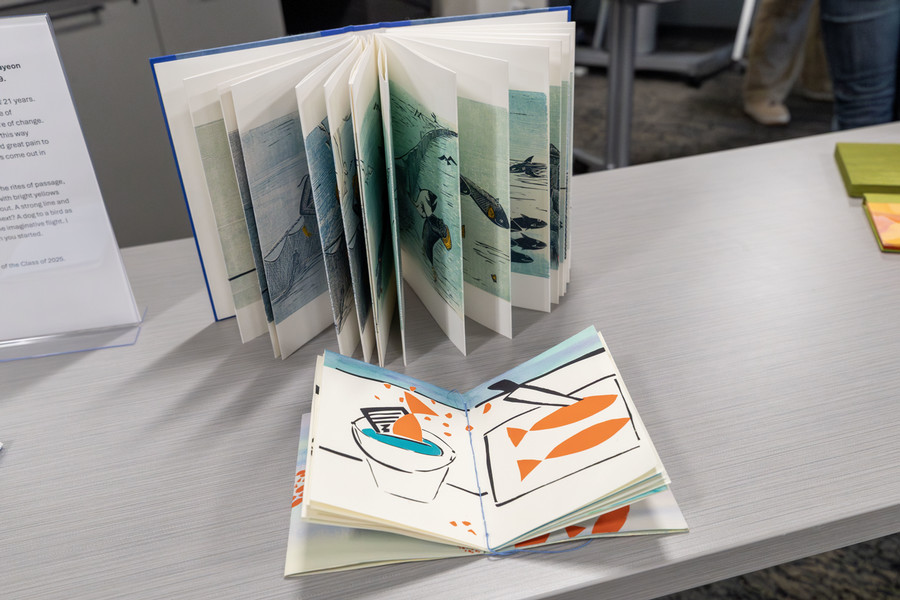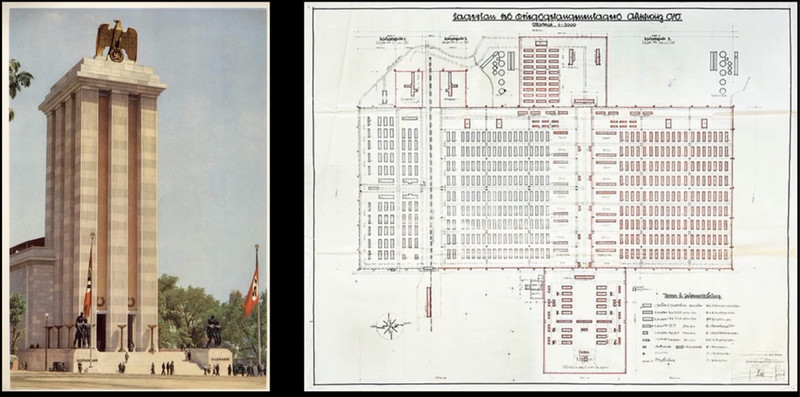Instant Coffee, Soy Sauce, Prints: Visiting Artist Teaches Non-toxic Printmaking
By Eliza Graumlich '17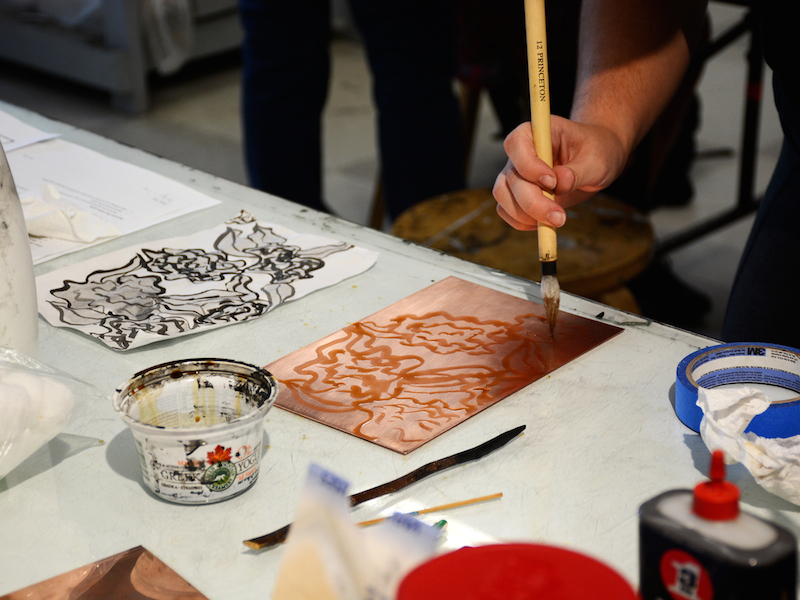
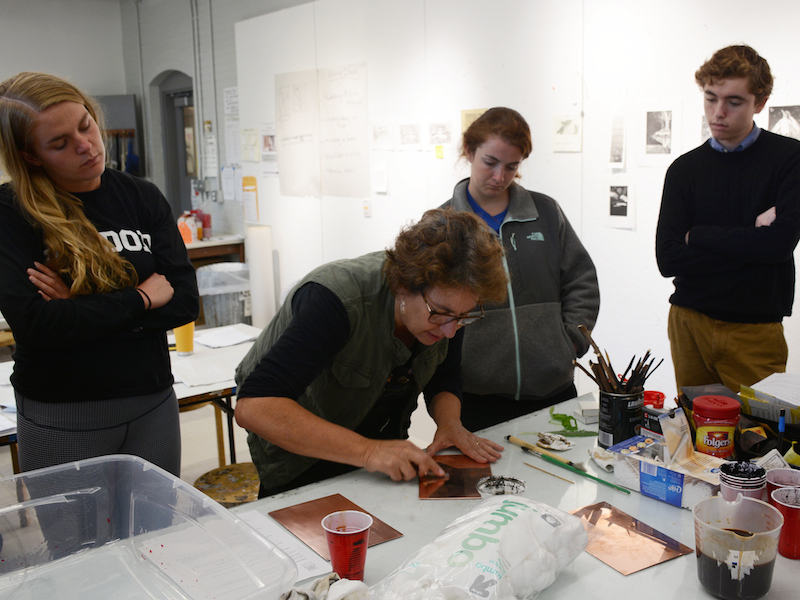
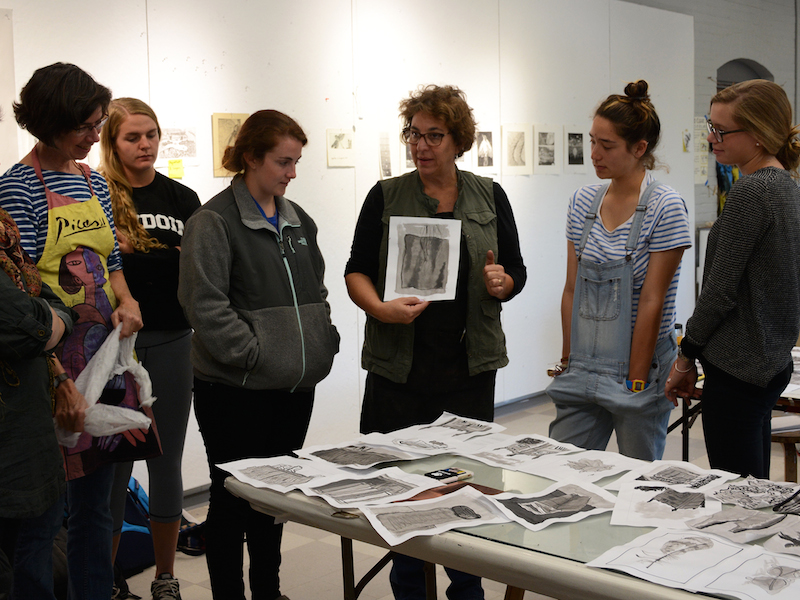
In a recent printmaking class, visiting artist Liz Chalfin taught students how to prepare plates with a solution of instant coffee and water. Later, the students cleaned their plates with soy sauce instead of the typical ammonia.
The use of non-toxic materials is central to Chalfin’s work at the Zea Mays Printmaking studio she founded in Florence, Mass. Invited to Bowdoin as the fall 2016 visiting artist for the Marvin Bileck Printmaking Project, Chalfin offered demonstrations to Bowdoin printmaking students on safer printmaking practices, and also spoke about her art and artistic process. An exhibit of her work is currently on display in the Robert H. and Blythe Bickel Edwards Center for Art and Dance.
In her Tuesday artist talk, Chalfin described her approach to printmaking, beginning with an analogy to literature. She asked the audience to consider the novel: “It’s a world that’s completely constructed, with dialogue and a whole arc of plot.” In printmaking, Chalfin looks instead to poetry, which evokes images and ideas in the reader with, often, few words and minimal construction. She builds a framework with her art so that further construction takes place in the mind of the viewer.
Chalfin also shared some of her favorite prints: “Shadow Dance” by Martin Lewis and “Night Shadows” by Edward Hopper, among others. Then, she moved on to less obvious sources of inspiration: the photography of Walker Evans and Robert Frank, as well as film noir. She is drawn to that which “elevates the ordinary into the extraordinary,” she said, and strives to achieve this in her own work.
For Chalfin, the printmaking process begins with a digital camera. “My photographs are really quick,” she said. “I don’t worry about composition. I am just gathering information.” Then, she converts the images into black and white and begins to make sketches, sometimes choosing only a small area of the original photograph to reproduce. “As I draw, I edit,” she said. “Each stage of the printing process allows me to change the image, and the work depends on this constant revision.” Next, she scans the drawings into Photoshop where she can manipulate the scale and opacity and layer different sketches. Once a composite image is developed, she etches it onto a copper plate, adds ink, and transfers the design to paper with an etching press.
Her prints are distinct for their implied narrative, achieved with an attention to light and shadow and the juxtaposition of the two. Many feature human figures obscured in darkness or abstracted in backlight. More often than not, they are monochromatic.
An audience member asked how she chooses color, when she uses it at all. “Color terrifies me,” she admitted. “I’m very comfortable in the realm of black and white and I use color like I use black and white—to play with value. Multiple colors require multiple plates and I think I like to keep the process simpler.”

